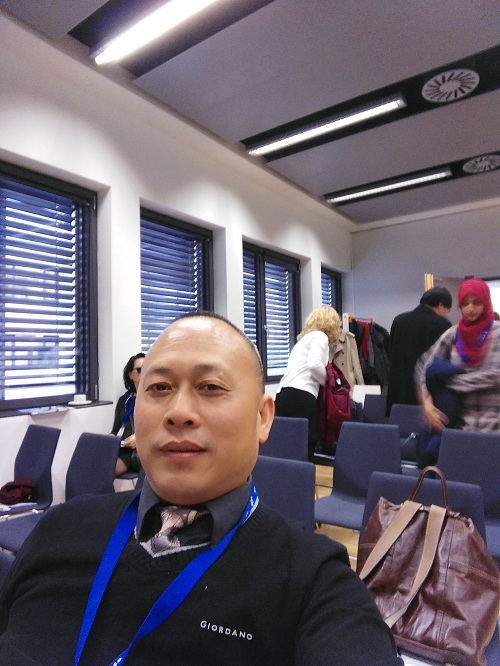Prof. WANG attended the Third International Forum on the “New Silk Road” and Sino-European Cooperation held at the University of Duisburg-Essen

Prof. WANG is at the conference
The Third International Forum on the “New Silk Road” and Sino-European Cooperation took place in Duisburg, Germany, Nov. 8-9, 2017. It was co-organized by the Institute of East Asian Studies IN-EAST (University of Duisburg-Essen), the Fudan Development Institute (Fudan University), the Confucius Institute Metropolis Ruhr and the China Center for Contemporary World Studies. The forum's cooperative partners include the National School of Development (Peking University), the city of Duisburg, the Duisburger Hafen AG and the Baltic Transport Journal as media partner.
Prof. WANG attended the forum and delivered a speech entitled “Cultural Differences, Conflicts and Possible Solutions along the ‘Belt’ and ‘Road’: An Intercultural Communicative Perspective”. His paper was highly appreciated by the audience at the conference.
Cultural diversity is the most typical feature of the "Belt" and "Road" and it poses a great challenge to BRI. Along the "Belt" and "Road", there scatter the world's most important civilizations, such as Chinese civilization, Indian civilization, European civilization and the like. There're over sixty four countries with distinctively different cultures, each having its particular language, religion, customs and traditions, etc. With the roll-out of the Belt and Road Initiative, Chinese in different fields will have to deal with the unprecedented diversities of culture.
According to the western scholars, such as Huntingdon, the dominant paradigm is that there are only clashes between different civilizations. However, Conflict is just one side of the coin, the other side is Harmony, which is the core value of Chinese culture. This is quite different from the western philosophy. The Harmony approach will guide Chinese in practical intercultural communication to deal with different peoples and different cultures.
By making use of cultural dimension theory put forward by Hofstede, this paper addresses the cultural aspects of BRI: what culture is; What cultural differences exist among the different countries and civilizations along the "Belt" and "Road", particularly language, religion and so on; what possible risks brought about by cultural differences to investment, infrastructure and other areas. Based on Intercultural Communication theories, this paper tentatively proposes some solutions to relevant cultural conflicts.
Key words: Belt and Road Initiative; Intercultural Communication; harmony and conflict
